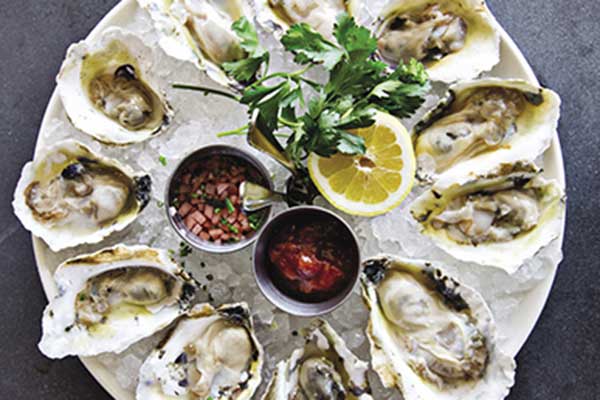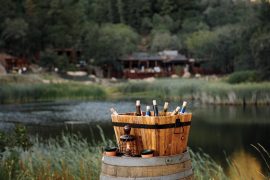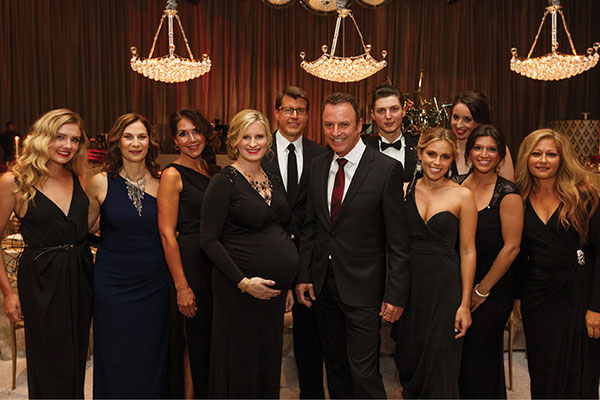Before grapes put down deep roots, Napa Valley was a farming community, dependent on the land in myriad ways to make a living. But that was a long time ago, when many areas around the country were patchworks of farmland. Times change, places develop, the landscape evolves. And though it’s true in Napa Valley, it has not been a physical expansion as much a wave of scientific and ecological advances that have made their way across the valley floor. You won’t find strip malls and superstores. You won’t see tall hotel buildings and subdivisions. In fact, there is only one traffic light in all of Calistoga. You might even feel as if you have stepped back in time.
Napa Valley’s wineries are working in big and small ways to reduce their carbon footprint. They encourage carpooling among their employees and use hybrid company cars. They run their farming vehicles with biodiesel fuels and compost their pomace. They focus on encouraging biodiversity and preventing pollution. And they install compressors that do double duty, capturing hot air and preheating facility water, harnessing water energy as well as the sun.
It’s not by accident that Napa Valley looks and feels nostalgic. And this visionary, well-thought-out plan was initiated in the late 1960s.
A History of Environmental Leadership
In 1967, Jack Davies, then owner of Schramsberg Vineyards, served as chairman of a citizens committee formed to support the creation of a greenbelt to preserve the fertile valley’s land—the first of its kind in the nation. To call the proposal revolutionary is an understatement, but it was conceived out of genuine concern for unchecked development.
“My dad’s family moved to L.A. in the 1930s. At the time, it was the number-one agricultural county in California. But how many oranges can you find in Orange County today?” asks Hugh Davies, president and CEO of the sparkling-wine property in Napa Valley. “When he went to Stanford, the Santa Clara Valley was a much different place too, and that changed dramatically in a short period of time. And so when he came up to Napa, sharing this dream to make high-quality wines with a relatively small group of people who were all moving in the same direction, they all quickly realized that they needed zoning to be established before Napa Valley ended up like those other areas.”
In 1968, the Napa Valley Agricultural Preserve was established, protecting the area from development by designating agriculture as the highest and best use of the land. It was followed by a series of new legislation over the subsequent years to offer further protections in the form of conservation easements, zoning laws, and growth-management ordinances. In 1990, the Winery Definition Ordinance was adopted. By establishing that the unique purpose of a winery is to make wine, the ordinance curtailed wineries creating side businesses: no weddings on-site, no bed-and-breakfasts, and no restaurants on the property. It also established a minimum parcel size for wineries and set local grape- sourcing requirements. And in an effort to control traffic in the area and the flow of people, the ordinance mandated tastings by appointment only. All this in an effort to protect the integrity of the Agricultural Preserve.
While the 1968 ordinance is currently extended to 2058 and requires a two-thirds vote by the people of Napa Valley before it can be overturned, Davies points out that the battle is never over. “The initiatives are only as good as the voters, and the people who will be voting 20 years from now are very different from those today. It’s an ongoing education that isn’t always comfortable, and so we try to strike a balance—because if it changes, it can happen very quickly.”
Napa Green
In the early 2000s, the Napa Valley Vintners, along with more than 20 other local industry and environmental groups, developed Napa Green, a rigorous voluntary program with independent third-party certification that focuses on environmentally sound and sustainable practices. Starting as a land-use-only certification, the program added a winery component in 2008. To date, there are 61,000 acres of land enrolled in Napa Green and more than 25,000 acres of vineyards are certified.
Overseen by the Department of Public Works, the tailor-made Napa Green Winery program evaluates each winery and how to best sustain natural features. The program partners with various groups to conduct energy assessments and work to reduce solid waste, prevent pollution, and conserve water as well as energy. And while many Napa Valley farmers will tell you they were “green” before Napa Green, they are grateful to have a sounding board and verifying agent to keep themselves in check.
Good Stewards With A Healthy Framework
Michael Honig, owner of Honig Vineyard and Winery, enrolled his vineyards in the Napa Green Land program. “I have become the caretaker for my generation, and so my motivation is to keep this legacy of my grandfather’s in the family.” He sees the value of the program not only in saving the land and creating a healthy environment but also in emulating that message around the world. “Green farming offers a daily benefit to consumers. Take two tomatoes: one grown by the farmer down the road, the other from Argentina that was picked a week ago and gassed to turn it red. The one grown with a little more love and care and nurturing will have a better flavor profile.”
Jon Priest, winemaker at Etude Wines, agrees. Etude’s vineyards have long been a model for sustainable viticulture, protecting the wetlands, restoring the creeks, and encouraging the native flora and wildlife to thrive. “Sure, it makes us feel good about ourselves, but that’s because it’s really who we are. It’s our ethos. And the fact that there is a certification to help define and recognize that is great.” With the Napa Green Land and Winery programs as a validation of what Etude believes in, Priest takes comfort in knowing it gives his customers the confidence to also feel good about themselves for enjoying wine made in a responsible way. “We know we are growing grapes in a manner that isn’t taking anything away from the environment or our ecosystem, and now they do too.”
Honig admits that it’s not always easy for a society as far removed from agriculture as ours to visualize what he can firsthand in the fields each day. “Whether consumers see that benefit directly or not, through third- party endorsements we know they think our wines are better because of our practices. A lot of the things we do under the Napa Green program ultimately allow our wines to be better, because we’ve grown better grapes.”
“If you look at the history of agriculture, a true steward of the land takes care of it for the next generation,” explains Priest. “We want to be a model of sustainability and by taking the elements of programs like this, we have a framework to show how we do it.”
Full Circle
St. Supéry Estate Vineyard & Winery CEO Emma Swain points to a bluebird box, one of 150 that were put up around the vineyards two years ago. The birds feed on bugs that have an affinity for vines; don’t they deserve a home for all their hard work? Building bird boxes, raising bees to encourage floral diversity, and growing 1,000 heirloom fruit trees— fruit that makes its way into the kitchens of lauded local chefs—on its properties so that it’s not wall-to-wall grapes are just a few of the ways St. Supéry keeps its vines, and ultimately its wines, healthy. “Choosing sustainable practices in both our vineyards and at our winery is simply the right thing to do,” Swain says. “We are family-owned and want to preserve the land for generations to come. In doing so, we are also better neighbors and a better employer.”
St. Supéry has the benefit of vast acreage. Their Dollarhide Ranch includes more than 1,500 acres, but only a third of those are planted with vines. Josh Anstey, VP of vineyard operations, has carefully maintained and encouraged the natural diversity. Under his watchful eye, the wildlife has flourished along with the grapes. In fact, the Dollarhide Ranch has so many native birds that the National Audubon
Society makes an annual visit as part of their bird census. “By keeping the entire ecosystem healthy and in balance, we aren’t overstressing the vineyard in one year to suffer in quality in a future year, allowing this property to continue this way into perpetuity,” adds Swain.
But it’s not all about what happens in the vineyards. “On the winery side, we were using many sustainable practices when it came to large-impact items, but as we went through the Napa Green Winery certification we found a number of areas we could improve upon.” From lightbulbs to how tanks are warmed, Swain looks at each improvement as a chance to “create a culture at our winery where we think about the long-range effects of our business decisions, rather than short-term cost and benefit.” Involving everyone is a positive team-building exercise, and today St. Supéry has an environmental engineer on board to monitor and manage their water and power usage. “From installing solar-power systems to new energy aerators in our waste ponds, there is always room to improve.”



